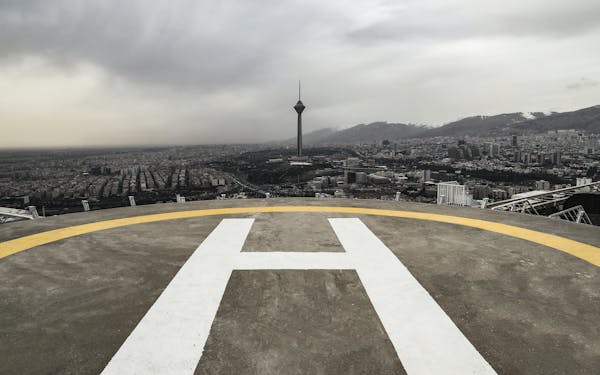Following Iran's Historical Thread: From Ancient Empires to Contemporary Shift
Introduction:
Iran, a land imbued with a rich cultural heritage and a tumultuous history, has been a crossroads of civilizations for millennia. From the grandeur of ancient empires to the complexities of modern geopolitics, the history of Iran is a captivating narrative that unfolds like a tapestry of diverse influences and remarkable achievements.
Ancient Persia:
The story of Iran begins with the rise of ancient civilizations along the fertile plains of the Tigris and Euphrates rivers. Among them, the Persian Empire stands as one of the most enduring and influential. Under the leadership of Cyrus the Great, Persia expanded its boundaries to become the largest empire the world had ever seen, encompassing vast territories from the Mediterranean Sea to the Indus River.
The Achaemenid dynasty, founded by Cyrus, introduced innovative administrative systems, such as the first known postal service, and promoted religious tolerance, allowing the diverse peoples within its borders to practice their beliefs freely. The legacy of the Achaemenids is perhaps best encapsulated in the grandeur of Persepolis, the ceremonial capital adorned with magnificent palaces and intricately carved reliefs.
Hellenistic and Parthian Periods:
Following the conquests of Alexander the Great, Iran became part of the Hellenistic world, experiencing a synthesis of Greek and Persian cultures. The Seleucid Empire, established by Alexander's successors, ruled over much of Iran before giving way to the Parthians, who established their own dynasty and revived Persian traditions.
The Parthian period witnessed the flourishing of trade along the Silk Road, connecting Iran to China and the Mediterranean world. Parthian art and architecture, characterized by intricate metalwork and monumental fortresses, reflect the empire's military prowess and cultural sophistication.
Sassanian Empire:
The Sassanian Empire, which rose to power in the 3rd century CE, marked a resurgence of Persian identity and Zoroastrianism, the ancient religion of Iran. Under rulers like Shapur I and Khosrow Anushirvan, the Sassanians expanded their influence across the Near East, engaging in conflicts with the Byzantine Empire and fostering a golden age of art, literature, and science.
The Sassanian legacy includes iconic landmarks such as Taq Kasra, the majestic archway in Ctesiphon, and intricate silverware adorned with royal motifs. Despite facing external pressures from Arab invaders, the Sassanian Empire left an indelible mark on Iranian culture and identity.
Islamic Conquest and Medieval Period:
The Arab conquest of Iran in the 7th century CE brought Islam to the region, leading to profound socio-cultural transformations. Despite initial resistance, Islam gradually took root, shaping Iranian society and institutions. The Abbasid Caliphate, centered in Baghdad, exerted authority over Iran, albeit with periods of local autonomy under dynasties like the Samanids and Buyids.
The Seljuk Turks, followed by the Mongol invasions led by Genghis Khan and his descendants, ushered in further changes, including the introduction of new architectural styles and the assimilation of Turkic elements into Iranian culture. The Mongol Ilkhanate, under rulers like Hulagu Khan, witnessed the flourishing of Persian poetry and historiography.
Safavid Renaissance and Qajar Era:
The Safavid dynasty, founded by Shah Ismail I in the 16th century, marked a renaissance of Persian art, literature, and architecture. Under Shah Abbas I, Isfahan became a center of artistic innovation, adorned with stunning mosques, palaces, and gardens. The Safavids also established Twelver Shia Islam as the state religion, shaping Iran's religious identity for centuries to come.
The Qajar era, which followed the collapse of the Safavid Empire, saw Iran grappling with internal strife and external pressures from European powers. Despite modernization efforts under rulers like Naser al-Din Shah, Iran remained politically fragmented and economically vulnerable, leading to social unrest and discontent among the populace.
Modern Iran:
The 20th century brought seismic changes to Iran, from the Constitutional Revolution of 1906 to the Islamic Revolution of 1979. The Pahlavi dynasty, established by Reza Shah Pahlavi, sought to modernize Iran and assert its sovereignty in the face of foreign interference. However, the reign of Mohammad Reza Shah Pahlavi was marked by authoritarianism and social inequality, culminating in the overthrow of the monarchy and the establishment of the Islamic Republic under Ayatollah Khomeini.
Since the revolution, Iran has navigated a complex geopolitical landscape, facing international isolation and economic sanctions, yet retaining its cultural resilience and regional influence. Despite challenges, Iran continues to cherish its ancient heritage while embracing the dynamics of modernity and globalization.
Conclusion:
The history of Iran is a testament to the enduring spirit of its people and the resilience of its civilization. From the heights of ancient empires to the complexities of modern nationhood, Iran's journey is a multifaceted narrative that resonates with both continuity and change. As Iran continues to write its history in the 21st century, it remains an enigmatic land whose past informs its present and shapes its future.






Comments